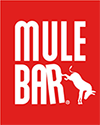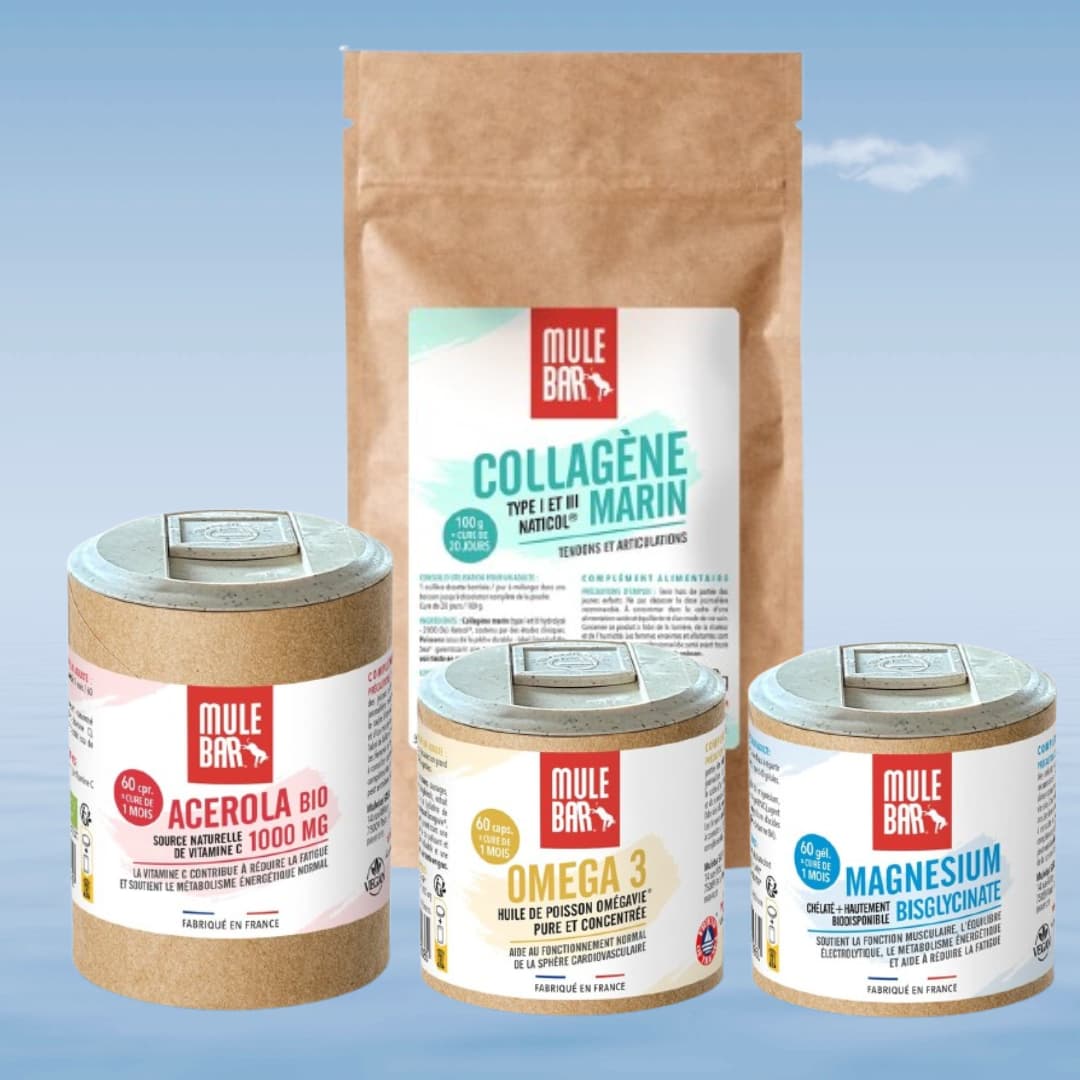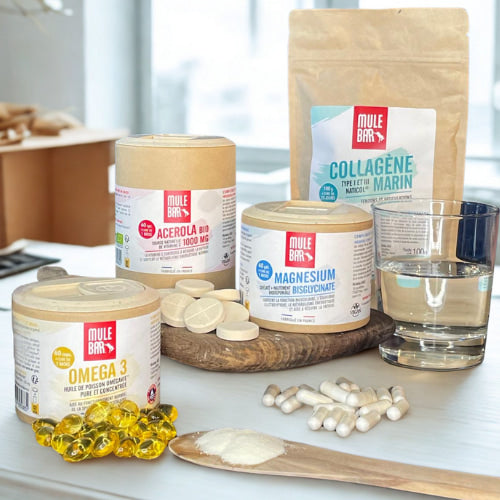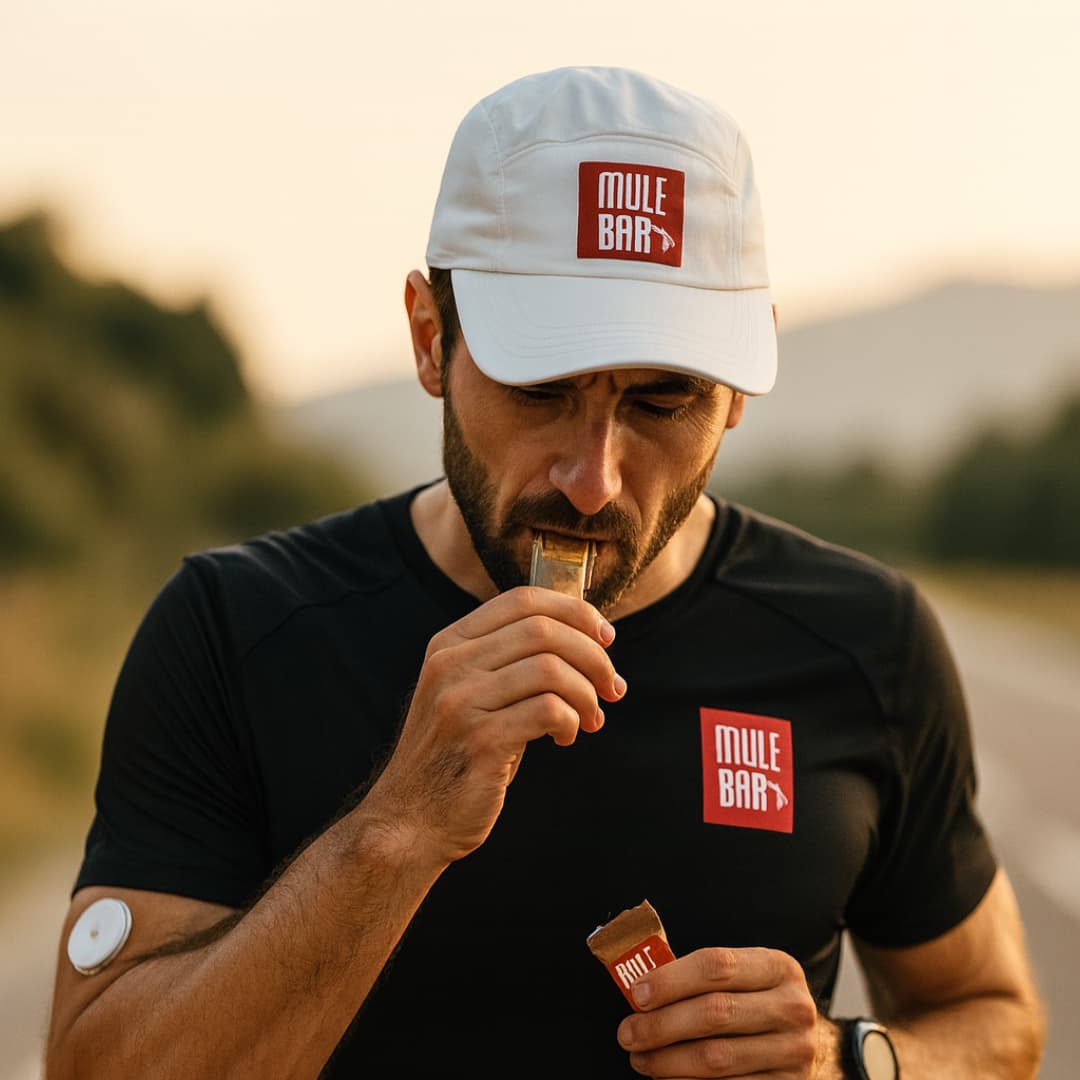For 31 days, from September 3 to October 4, 2025, Kilian Jornet redrew the map of human endurance. The stats are completely crazy: 72 of the highest peaks in the American West climbed using only his legs, around 5,000 km on foot and by bike, an elevation gain equivalent to 14 times Everest... Welcome to the heart of the "States of Elevation" challenge, which beyond the feat is a true masterclass in nutrition.
When Kilian eats during such a challenge, it seems complex, but it's logical and I'll explain everything to you.
Let me summarize his approach for you: a fusion of an almost ascetic dietary philosophy, a pragmatic adaptation to the demands of the extreme, and cutting-edge scientific support.
With this article, you will understand how he was able to transform a month-long odyssey into a feat that few human beings would be capable of accomplishing.
The challenge: to hold on… to hold on for a very (very) long time
Taking on an ultra challenge over several weeks requires a different approach. Nutrition must allow for daily efforts lasting more than 18 hours, for more than a month, with extreme calorie expenditure (~8,000 to 9,000 kcal/day), while minimizing digestive upsets and promoting rapid recovery.
That's said. So how did he do it?
The philosophical foundation: whole foods
The cornerstone of Kilian Jornet's nutrition for this project is based on a simple but radical principle: eating almost exclusively whole, unprocessed foods. In the camper van that served as his mobile base camp, his vegetarian diet consisted of a simple but nutrient-dense base: sweet potatoes, tofu, eggs, and dates.
This is not a whim, but a deliberate strategy.
By favoring low-glycemic, nutrient-dense foods, it ensures a slow and sustained release of energy. It prevents the blood sugar spikes and sudden energy crashes that are the nightmare of endurance athletes.
It's a diet designed to build core resilience, to nourish the body over time rather than simply "fueling" it for immediate exertion. This philosophy is consistent with strategies he's shared before, particularly on Reddit. .
Extreme pragmatism: fueling yourself while moving
Yet this philosophical foundation must face the reality on the ground: a daily effort equivalent to “a stage of the Tour de France plus a marathon at altitude.” This is where Kilian’s pragmatism comes into play.
Since it is difficult to eat a plate of sweet potatoes or rice in the middle of a rise, he opts for more direct sources of energy, easy to transport and assimilate: pure olive oil (nearly 9,000 kcal/liter), sometimes added to sandwiches, biscuits, gummies or even donuts depending on the occasion.
This is not a deviation from its principles, but an intelligent adaptation between basic nutrition (at base camp: fresh produce, sourdough bread, etc.) and refueling in action.
These simple, "pleasure" carbohydrates are useful for quick breaks or in cases of extreme fatigue, but remain secondary to the lipid strategy. The latter provides continuous energy and allows it to save its carbohydrate reserves for moments of technical intensity or energy deficit.
We could summarize his approach as follows: whole foods and good fats build long-term endurance, fast carbohydrates and a few sweet treats break the monotony and provide immediately assimilable energy.
While the basic rules may seem simple, even simplistic, they must adapt to the multiple constraints of ultra efforts. Extreme fatigue, weather conditions, technical stages, altitude, time of day, general physical condition, etc. The mental state itself must also be taken into account.
The invisible engine: metabolic efficiency and gut health
One of Kilian Jornet's most puzzling traits is his ability to perform for hours on end with minimal food or drink. He can last 10-hour workouts without eating or drinking, and this is just one example of many other "oddities."
This ability isn't magic; it's the result of a profound metabolic adaptation: he's what's called a "fat-adapted" athlete. His body is extraordinarily efficient at using its own fat stores as an energy source, even during intense exercise.
Its metabolic efficiency gives it exceptional energy autonomy, freeing it from constant dependence on carbohydrates and reducing the risk of gastrointestinal disorders.
But for an engine, even an efficient one, to operate over such extreme durations, the plumbing must keep up. This is where a more scientific dimension of its strategy comes in: gut health.
For "States of Elevation," Kilian was supported by a probiotic brand. The goal was to maintain a healthy gut microbiome for three critical reasons:
-
Optimize nutrient absorption : Ensure that every calorie ingested, whether from a sweet potato or a candy, is used efficiently by the body.
-
Reduce inflammation : Extreme exertion and altitude generate major inflammatory stress. A healthy gut helps modulate this response, promoting better recovery day after day.
-
Support the immune system : Such a journey weakens the body's defenses. Probiotics help maintain immune resilience against infections.
This focus on gut health is a cutting-edge approach, particularly crucial at high altitudes where digestion is often compromised. It seeks to sustain performance.
A strategy in motion : the art of adaptation
It's impossible to set a nutritional plan in stone during such an adventure. Jornet's system is dynamic.
The first few days in Colorado were particularly difficult, marked by dehydration and a weight loss of up to 5 kg. And it's not like he started out overweight!
It had to adjust in real time to meet colossal energy and water expenditures.
How did he adapt in practice? By drawing on his immense experience and his ability to listen to his body.
You don't eat the same way when you do 31 ultras in a row and when you run an Ultra-Trail du Mont-Blanc or a Western States. For a 100-mile format, Kilian Jornet's planning is precise: he starts with a fat-rich mix (avocado, coconut oil, nuts) for the first few hours, then gradually switches to almost pure carbohydrates (gels) for the end of the race, reaching up to 110g of carbohydrates per hour for maximum intensity.
Don't try this at home; it's huge and reserved for elite athletes. At 60g of carbohydrates per hour, we're already at a good level of energy intake.
For "States of Elevation", Kilian has chosen a strategy that departs from the conventions of modern endurance sports. Instead of energy gels and powders, he favors a diet with very high fat intake: he pours pure olive oil directly into his flasks, exploiting its exceptional caloric density (around 9,000 kcal per liter) and its ease of transport on a bike or while running.
This strategy reduces dependence on heavy logistics and helps limit digestive issues that are easily observed during extended expeditions. Olive oil ensures continuous energy during long phases of moderate effort. Carbohydrate reserves are thus preserved for the most intense moments, such as a technical climb or a rapid attack.
True to his principle of adaptation, he constantly adjusts the nature and quantity of nutrients ingested, according to his body's signals and the demands of the moment, making the most of his metabolic flexibility – this balanced mix of lipids and sugars which distinguishes his dietary model from that of many other runners.
And after such a challenge? How do we get back to normal?
After the intense effort of States of Elevation, Kilian Jornet resumed a regular and balanced diet, focused on raw, fermented, and whole foods, continuing to prioritize a endurance and healthy metabolism.
He emphasizes the importance of listening to the body, constant hydration, and fixed eating rhythms (three meals a day) to optimize muscle recovery and avoid chronic fatigue.
An original strategy? Confrontation with the science of sports nutrition
Kilian Jornet's strategy isn't a revolution that contradicts the foundations of sports nutrition. Rather, it's a masterful and highly personalized application of it.
Its originality does not lie in the invention of new principles, but in the synthesis and mastery of validated concepts, pushed to a level of extreme efficiency.
-
Fat adaptation : a well-known principle, exceptionally well-mastered. The concept of the "fat-adapted" athlete is well-established in the world of ultra-endurance ( Ketogenic diet ). Science recommends developing this "fat engine" through fasted training and a diet favoring the right lipids for long, moderate-intensity efforts. Kilian Jornet's strategy fits perfectly with this logic. What's exceptional is his level of adaptation, allowing him to function for hours on end with minimal intake, a skill he has cultivated over years.
-
The "whole foods" base : a distinctive approach. Whereas standard sports nutrition relies heavily on formulated products (gels, powders, bars), Kilian anchors its core strategy on whole, unprocessed foods. This is its main point of differentiation. While experts recommend complex carbohydrates like brown rice syrup For gradual energy, he goes further by using sweet potatoes or dates as his base fuel. This approach prioritizes nutrient density and long-term digestive health, which is crucial for a month-long effort.
-
The pragmatism of simple carbohydrates: a convergence with science. Despite his "whole foods" philosophy, Kilian doesn't reject conventional energy intake. His consumption of candy, cookies, or gels during intense phases or at the end of races is perfectly in line with scientific recommendations that advocate fast carbohydrates for an immediate energy boost and to support high intensity. He thus demonstrates essential flexibility, distinguishing between basic nutrition and that of action.
-
Gut health: a top priority. Jornet's focus on his gut microbiome via probiotics puts him at the forefront of sports nutrition. While the general public is still discovering the importance of gut health, performance science has already validated its crucial role in nutrient absorption, inflammation management, and immune support, especially at altitude. This approach isn't "original" in the sense of being unscientific, but it's still relatively uncommon and reflects a comprehensive understanding of performance.
Kilian Jornet's originality is not to challenge science, but to embody it with extreme discipline and personalization.
It fuses a sustainable and healthy approach (whole foods) with the imperatives of high performance (fast carbohydrates), all optimized by metabolic control and cutting-edge scientific support (gut health).
The best of both worlds: How can you be inspired by Kilian Jornet without being Kilian Jornet?
Kilian's strategy is that of an exceptional athlete, but you can totally take inspiration from it! Whether you're a trail runner, cyclist, or marathoner, his fundamental principles can be adapted to improve your performance, comfort, and enjoyment.
The idea is simple: combine a healthy basic diet with natural and effective sports nutrition products to cover all your needs before, during and after exercise.
Pillar 1: Your daily whole food base
Like him, it's in your best interest to base your daily diet on whole, natural, and minimally processed foods. This is what builds your core resilience. Your pre- and post-workout meals should prioritize complex carbohydrates (oats, brown rice, sweet potatoes), quality proteins, and healthy fats.
Pillar 2: Energy pragmatism during exercise with Mulebar
This is where Kilian's strategy and Mulebar products align perfectly. Let's face it, it's difficult to consume complex foods during exercise. Mulebar products, 100% natural, are designed to provide you with digestible and efficient energy.
-
For basic energy and moderate efforts: Energy bars, rich in natural carbohydrates from cereals and fruits, offers you long-lasting energy and a soft texture, ideal at the start of an outing or during activities such as hiking or cycling.
-
For easily digestible energy: As exercise intensifies, digestion becomes more difficult. Energy compotes are a great alternative, tasty and semi-liquid, easier to digest than solids. Perfect for trail climbs or intense cycling phases.
-
For an immediate boost: Energy gels Mulebar are designed for ultra-fast assimilation (in less than 5 minutes), which is ideal just before a difficulty or to counteract a drop in energy.
-
For hydration and electrolytes: Dehydration is your enemy. Mulebar hydration drinks replenish mineral losses, while sports drinks add carbohydrates for a valuable double boost.
-
To avoid fatigue: On efforts lasting more than 3-4 hours, don't hesitate to alternate the sweet flavors of Mulebar products with a savory option (like homemade sweet potato energy compote). It's a winning strategy to keep you hungry.
Pillar 3: Optimized recovery with proteins
The period just after your effort, the famous "metabolic window", is crucial. This is the moment when your muscles are real sponges, ready to repair themselves and replenish their energy stores (Glycogen).
Protein bars Mulebars are specifically designed for this phase. With 10g of protein per bar and 17g of carbohydrates, they allow you to begin rebuilding muscle at peak performance. According to science, you should aim for a ratio of 3g of carbohydrates to 1g of protein, and you can keep in mind 20 to 40g of protein after each session, depending on its intensity and the proximity of the next session.
A concrete example: your nutrition plan for a long outing (Trail/Cycle of 3-4 hours)
-
Before your outing (3 to 2 hours before): Make yourself a meal based on whole foods (good porridge or brown rice, for example).
-
Just before (1 hour before): An energy bar to replenish your reserves.
-
During exercise: Drink an exercise drink regularly in small sips .
-
1st hour: Eat an energy bar in several portions.
-
2nd and 3rd hour: Move on to energy compotes , easier to digest at this stage.
-
If you feel a bit sluggish: An energy gel just before a big climb will give you a boost.
-
After exercise (within 30-60 min): A protein bar and good rehydration (carbohydrates + electrolytes) to perfectly kick-start your recovery.
By combining a healthy basic diet with Mulebar's natural products, you can apply the principles of a champion like Kilian Jornet. You can adapt his strategy to your own scale to optimize performance, enjoyment, and recovery.
With experience, you too can achieve Kilian's masterful blend of simplicity and extreme precision. You don't need to be a top athlete to learn about yourself and find what works for you.
So, like him during his “States of Elevation” challenge, consume pure foods, with the pragmatism of fast sugars.
Train so that your metabolism, if not out of the norm, becomes flexible, with the support of rock-solid intestinal health.
Learn to know yourself, of course, but use this knowledge to adapt: each element in your nutrition has its place and its time.






Leave a comment
This site is protected by hCaptcha and the hCaptcha Privacy Policy and Terms of Service apply.